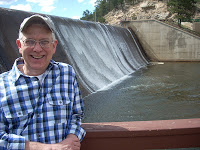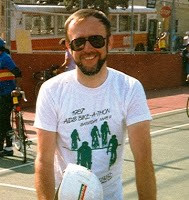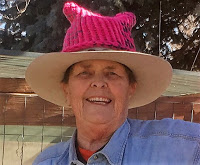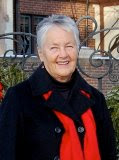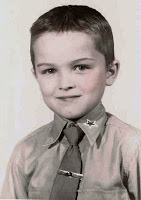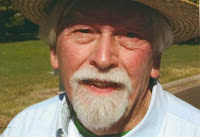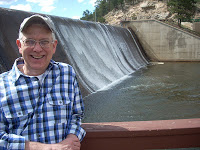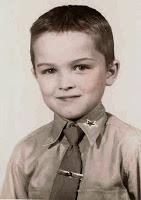wonder Mom was happy to live in town where almost everyone had electricity in
their homes. Not so on the farm where she grew up just ten miles south of
Junction City.
moved into town to attend high school, she entered a new world of running water
in kitchen and bath, flush stools inside the house, electric lights in every
room, natural gas stoves and heating systems, and refrigerators that could even
make ice. No wonder to me that she never wanted to return to the farm except to
visit her folks. And when she was being courted by a young man who wrote for a
newspaper, was buying into his father’s grocery store (that wonderful citified
substitute for a farm garden and fields), played the piano like a dream
(classical, church, and jazz), and sang with expression and in tune, it looked
like her life could become one of relative ease, say contrasted with her
mother’s.
could have ice every day—winter and summer: iced coffee (which she abhorred),
iced tea (great with meals in summer), and iced cream (need one say more?). She
could quickly get ice onto a burn, bruise, or swelling should a child need it,
and make better whipped cream by beating it in a bowl surrounded with ice, on
and on. And should she see a need for a large quantity of ice for any reason,
she could simply call the local Ice House and the Ice Man would show up to
deliver the size and style of ice needed. It took me years to understand any of
this; in fact, I just figured it out this year, 2016, my 69th year,
when I started writing about my early childhood.
grandparents on both sides of the family rarely had ice and certainly had no
electricity in their homes. My grandparents grew up without electricity but
fortunately got some when the Hoyle’s moved from Dwight to Junction City,
Kansas in the 1920s and when the Schmedemann’s greeted the national rural
electrification program to Clarks Creek in 1947—the year I was born. I’m sure
the same was true of my rural Colorado in-laws as well. To my amazement, my
mother-in-law used to eat crushed ice a lot, even had her own ice crusher to
make it. For her the habit may have been some kind of celebration of what she
had missed in childhood and probably kept alive the hope that she might someday
retire to life in town. Eventually she did so and kept enjoying her shredded
ice.
was lucky to have a refrigerator with a freezer compartment. It was rather new,
probably purchased the same year I was born. I say this because the folks’ old
refrigerator, a small one with a very small ice maker near the top, went out to
my maternal grandparents’ farm. Their lives surely got easier. By the time I
could make sense of anything, we in town were living high with running water,
city sewage, electricity, natural gas heat, a gas range and oven, a swamp
cooler, and a refrigerator with a freezer unit. This was luxury in our town.
Ice was made in cubes at home using trays with movable grids. Pull up the
handle and out pops the ice cubes, but watch out; they might be all over the
floor. Or you might have trouble getting them out at all. That’s when we’d run
water over them to begin the melting.
all for granted and do so love my Monday bowl of Guinness Ice Cream with
chocolate chunks, but that could be for the enjoyment of the ale flavor and
that of my favorite candy.
lives in Denver and spends his time writing, painting, and socializing. In
general he keeps busy with groups of writers and artists. Following thirty-two
years in church work and fifteen in a therapeutic massage practice, he now
focuses on creating beauty. He volunteers at The Center leading the SAGE
program “Telling Your Story.”
